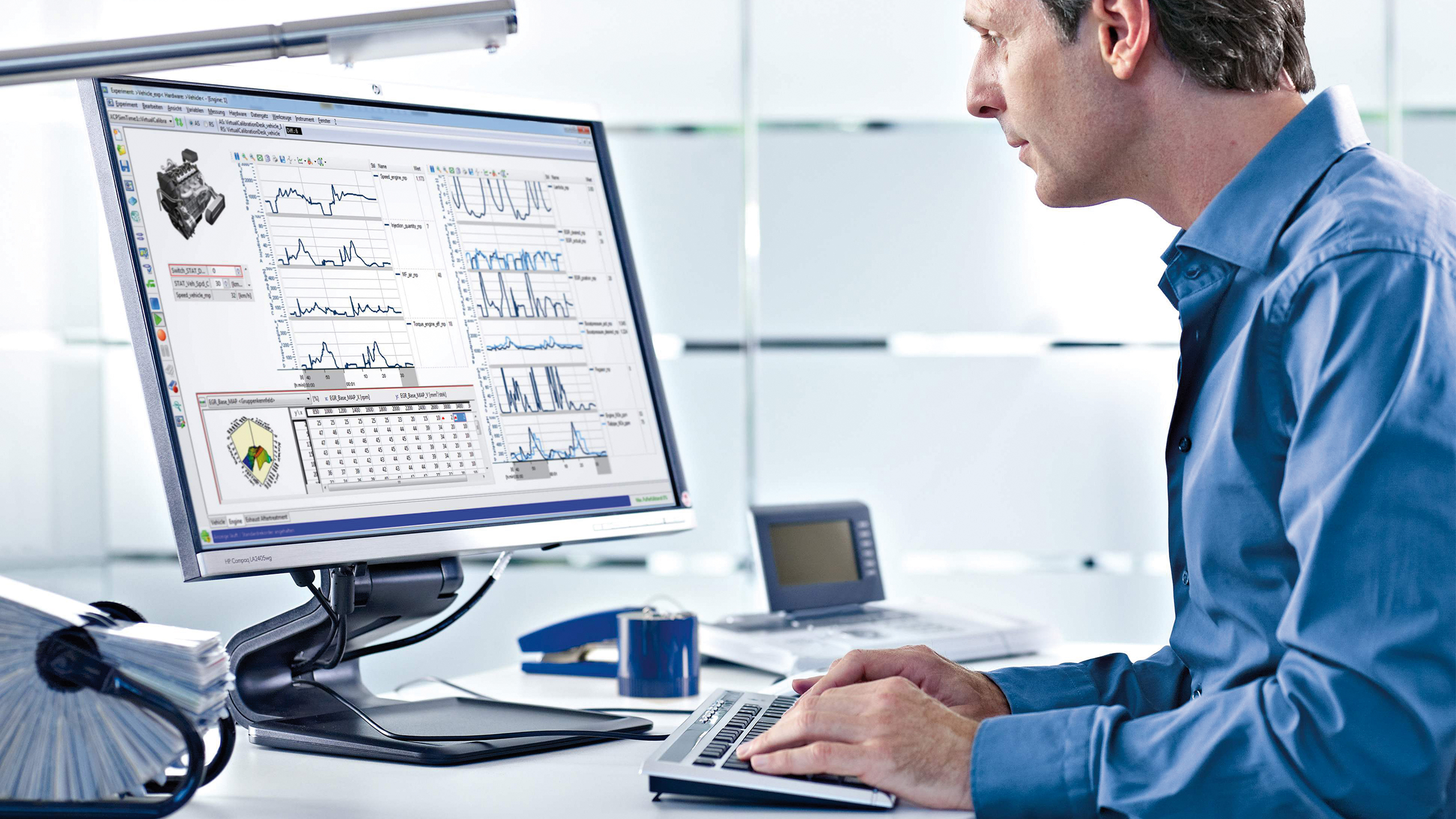Calibration and Validation under the Aspect of RDE
The increasing complexity in engine and emission-related tasks can be overcome in a simulation environment from IAV
Calibrators don’t have it easy: they need to cope with ever tighter emission ceilings and a growing number of vehicle derivatives. RDE (Real Driving Emissions) requirements are also increasing the complexity of engine and emission calibration – with vehicles in future having to meet the constantly lower emission levels under a broad range of boundary conditions. The self-contained simulation environment for calibrating control unit algorithms points the way and speeds up calibration work.
Work at the desk complements operation on the test bench or in test drives and makes testing efficient: this is the idea behind the IAV tool. “It gives calibration engineers a self-contained environment for simulating control unit algorithms”, says Stephan Adelberg, one of the engineers closely involved in developing the new tool. “To date, calibration work has merely been based on individual models which were also only modeled in special software, like GT or AMESIM, and had no interfaces to standard calibration tools, such as INCA or CANape.”
In contrast, IAV’s simulation tool interconnects several individual models to create a self-contained model chain encompassing, at least, the modules of vehicle, engine, engine management and exhaust gas aftertreatment. This makes it possible to perform many tests virtually, or even to substitute otherwise hard to access prototype tests with virtual ones. Calibrators can use it, for instance, to compare different versions of new vehicle concepts or configure and adapt the exhaust gas aftertreatment system. “The methodology is extremely versatile, allowing it to be implemented at any point in the development process”, Adelberg explains. “At present, there’s hardly any other comparable tool for the overall vehicle.”

The same tools for calibrators
“One central aspect in developing the model environment was the ability for calibration engineers to use their familiar tools, such as INCA (standard software for accessing the engine control unit), for virtual calibration”, Adelberg emphasizes. “Because this is the only way of ensuring it can be directly integrated into the existing calibration process.”
In practice, this is done as follows: Velodyn, IAV’s MATLAB®-based tool, provides the platform for integrating the various models. IAV’s MiLDesk tool is used for generating an executable overall model with the various described individual models in the form of an .exe file. Added to this, there are two description files in .a2L and .hex format with which the model can be incorporated in INCA. The compiled overall model can now be run on any desktop PC and communicates with INCA via the standard XCP protocol; simulation software, like MATLAB®, is no longer needed. “The simulation results are measured in exactly the same way as with INCA as they are in tests on the test bench or with a test vehicle”, Adelberg says. “This gives calibrators instant feedback, letting them assess the impacts of their input straight away.”
The self-contained simulation environment not only avoids the need for a large number of test drives and dynamometer tests – it also helps to limit the higher level of calibration input required for RDE and the associated extent of statistical validation this will involve. Without simulation tools, the calibrators would have to test new vehicles under all conceivable boundary conditions on the dynamometer or during a test drive.
“The vast amount of testing and the complex combinations of boundary testing conditions alone make this more or less impossible”, Adelberg says. “But the overall model provides a key to coping with the growing level of complexity. For example, in the model we can prescribe ambient temperature or altitude above sea level and test whether the vehicle remains within the emissions limits.”
RDE-compliant journey profiles can be generated for the calibrator to go through in the virtual vehicle. A further aspect of the simulation environment is its modularity. For example, the tool can be adapted to permit integration of a virtual control unit into a HiL system (hardware-in-the-loop) instead of a real-world control unit. Here too, the IAV model environment gives the calibrator the capability of using models to calibrate algorithms under complex boundary conditions, such as the ones involved in RDE.
Engineering – faster than in real time
Depending on the complexity of the various individual models, simulations within the overall model run much faster than in real time. Compared with real-world test drives, this is why the more virtual calibration used at the desk saves more time. “More and more derivatives and test cases with less of the expensive prototypes: this is now the biggest challenge facing calibrators”, says Adelberg, summarizing. “In future, we will only manage to continue getting calibration done within a reasonable time if we continue to advance our methods.”
Now available for two years, the self-contained simulation environment has already been used in many customer projects. The new methodology is shown to be particularly efficient where volume production projects involve a large number of vehicle derivatives and developers start generating models at the earliest possible stage.
